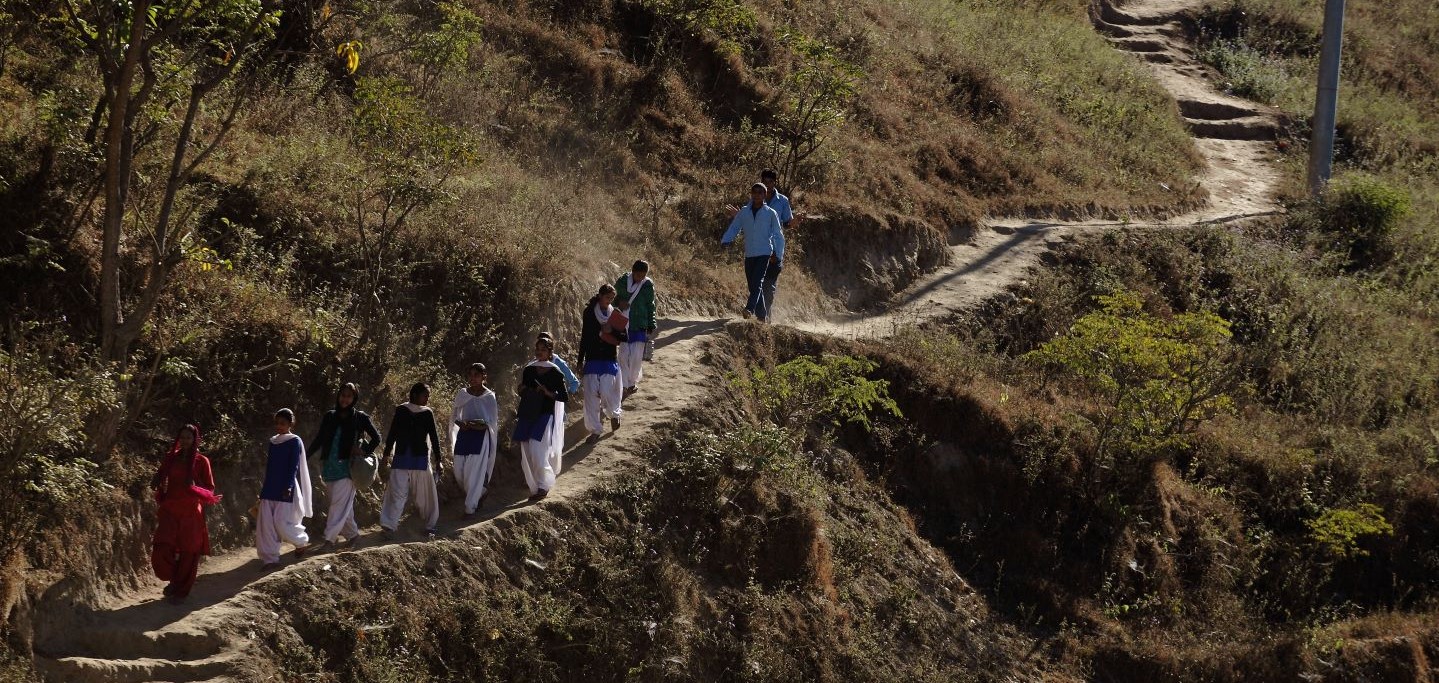Communities use GIS maps to conserve forests and adapt to climate change
IFAD Asset Request Portlet
Asset Publisher
Communities use GIS maps to conserve forests and adapt to climate change
Estimated reading time: 4 minutes
In the watershed of western Nepal’s Katti River, forests are a cornerstone of local livelihoods. They’re a source of fodder for livestock, fuel for cooking and timber to build homes, and of countless products such as honey, fruits and medicinal plants.
The region’s broadleaf and pine forests have other, subtler benefits too. They capture carbon; hold onto soil to prevent landslides down steep slopes, reducing the impacts of floods; sustain biodiversity and genetic resources; and conserve the water that communities use for drinking and irrigation.
Although natural disasters have long affected the region, environmental degradation and climate change are making them worse. As recent IPCC reports have shown, climate change is increasing temperatures and intense rainfall, causing flash floods, extended drought and runaway forest fires.
Healthy forests are essential for mitigating these impacts. In light of this, the IFAD-funded ASHA project developed and implemented Local Action Plans for Adaptation (LAPAs) - strategies that lay out how to adapt agriculture and rural livelihood systems to climate change and how to safeguard natural resources.
But making the right decisions about managing natural resources isn’t always easy. Every ecosystem has to be considered as a whole – and that’s especially true for watersheds, areas of land connected by an arterial network of waterways draining into a common body of water. When the rainfall catchment area is well vegetated and soils are healthy, water is released more gradually, reducing risk of downstream flooding and ensuring a steady supply of clean water year-round.
To get a bird’s-eye view, ASHA’s experts compiled data from various sources (including socio-economic records and remote sensing imagery) and created maps of the Katti watershed and other areas. These maps shed light on the issues the Katti watershed faced – as well as possible solutions.
A look at the maps helping the Katti watershed’s communities
GIS maps such as the ones below help ASHA experts and local communities evaluate the current status of various land types and resources and plan how to mitigate risks and use resources sustainably in the future.
Some of their maps, for example, compared how land had been used in 1996, 2006 and 2016, whether for forestry, agriculture or other purposes. These showed which areas had experienced the greatest changes over time due to human use.
Other maps identified areas affected by deforestation, soil erosion, drought and floods. They also traced rivers and springs that might need protection or could be sustainably used for irrigation, as well as where people lived and how they made their living.
Put together, the maps provided new ways of understanding the Katti watershed and how to manage it. For example, they showed that the amount of land covered by forest had increased over the 20 years since 1996 – but largely in areas managed by communities, showing the importance of having local people take the lead.
At the same time, 580 hectares of land had become deforested, and 137 hectares were at risk of landslides. Interviews with community members, visits to forests, and other data revealed that major reasons included illegal logging, dependency on firewood for fuel, and a decreasing amount of available agricultural land, which led communities to encroach on forestland or extract more of its resources than was sustainable.
Armed with these data, ASHA staff embarked on the next stage of the LAPA process: helping communities better understand the impacts of climate change on their lives, identify the hazards they face, and prioritize actions.
In consultation with ASHA staff, community members developed 200 LAPAs of their own, covering 21 sub-watersheds in seven districts. Over 5,000 community groups came together to implement the plans, supported with expertise from the ASHA team and financing from IFAD and municipal budgets. These included adopting climate-smart agricultural practices such as permaculture, building community infrastructure to improve water availability and reduce soil erosion, promoting sustainable forest use and reforestation, and the use of environmentally friendly technologies such as fuel-efficient stoves.
| Community members come together to create landslide control measures in an at-risk area. |
By the end of 2021, over 21,000 hectares of land were being managed using climate-resilient practices. Agricultural yields had increased by 15–30 per cent, livestock were healthier, and new practices like beekeeping had become available, representing both a new income stream and another way to revitalize the region’s forests. Altogether, these changes made households more able to withstand climate shocks and reduced the need to over-exploit forest resources.
“Rural-dwellers and indigenous communities are the best guardians of the forests, land and water resources on which they depend,” says Megh Nath Ale, Permaculture Lead Farmer for ASHA. “Being able to assess local climate change impacts and environmental degradation, engaging in participatory adaptation planning and accessing the right tools, knowledge and resources makes it possible for us to manage natural resources and deal with climate change.”
Browse IFAD’s catalogue of geospatial tools and learn how they can be used for climate investments.
Learn more about IFAD’s work in Nepal.
Publication date: 31 March 2022